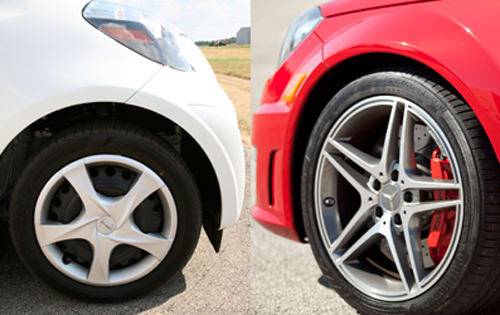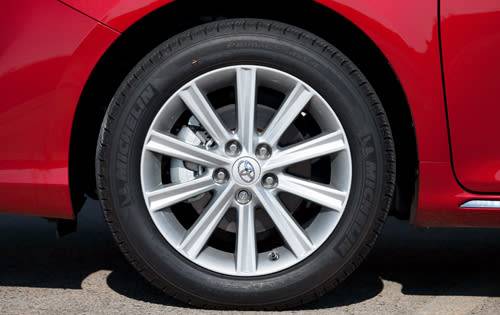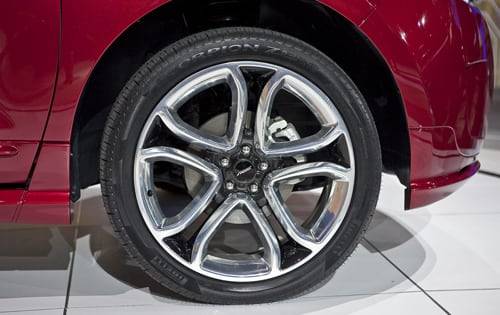Big Wheels Equal Big Replacement Costs


On your way to work one morning, as you step on the gas to make a green light, you spot a pothole big enough to swallow a Scion iQ — but too late to avoid it.
You cringe as you brace for the dreaded clunk! and accompanying jolt, hoping your tire survives the impact and spares you the replacement costs, because generally, the larger that tire is the more expensive it will be to replace.
The tire, though, may not be your biggest worry (or expense). If the wheel that the tire is mounted on is bent or otherwise damaged, replacing it could cost hundreds of dollars if it is the aluminum alloy type installed on a growing number of vehicles. Auto manufacturers have steadily increased the diameter of the wheels and tires on most vehicles during the last 15 years, so that now the standard size on a compact car is typically at least 15 inches. A 16-inch wheel is the smallest size available on midsize sedans, and many SUVs come with 17-inchers as the smallest available. Larger wheels and tires equal higher replacement costs, and alloy wheels boost the cost higher still — much higher in some cases.

The Honda Accord LX used to come with steel wheels, but now the standard wheel is a 16-inch alloy that dealers said would cost $425 to replace. Tire prices ranged from $123 to $138.
SUVs tend go even bigger to enhance their muscular appearance, and 18- and 20-inch wheels and tires are commonly available.
When buying a vehicle, new or used, consumers have to take whatever wheels and tires are installed on the vehicle (unless they’re willing to pay considerably more to swap them for different ones). To avoid buying one with alloy wheels and larger tires they would have to choose a lower-priced trim level, such as a Camry LE instead of an XLE. That would likely mean giving up other features, such as a sunroof, navigation system or other feature not offered on the base model.

The Ford Fusion Titanium has optional 19-inch wheels available in machined or dark stainless aluminum that add $695 to the price of the car. But the cost of replacing one tire (Continental ContiProContact) would be $244 to $292. A wheel? Probably more than $500 at a dealership.
As for where to buy tire replacements, tire prices may be lower at tire dealers than at car dealers, and tire dealers might have the exact tire you need in stock (most car dealers probably will have to order one).
To replace a damaged alloy wheel with an exact match on a 2012 or 2013 model vehicle, however, will probably require going through a car dealer. Aftermarket steel wheels are available for around $75 in the 16-inch size, but they may not weigh the same as the original equipment wheel or be designed to hold the original wheel cover that came with the car. In addition, used wheels might be available for some models at lower cost.

Wheel and tire protection is the service’s most popular product, he said, and about 50 percent of customers in the Midwest and Northeast — the pothole patch of the U.S. — buy it.
In those parts of the country, he added, the claims frequency for wheel and tire damage works out to more than one per customer.
Luxury brands such as Mercedes, BMW and Audi offer high-performance models that are equipped with extra-wide, lightweight wheels designed to improve cornering ability (plus they look good), and the prices can skyrocket.
For example, Berry said that on a 2012 Mercedes C63 AMG (photo above), one wheel would cost $1,880 and the tire … $530.

Contributor Rick Popely has covered the auto industry for decades and hosts a weekly online radio show on TalkZone.com.
Featured stories




